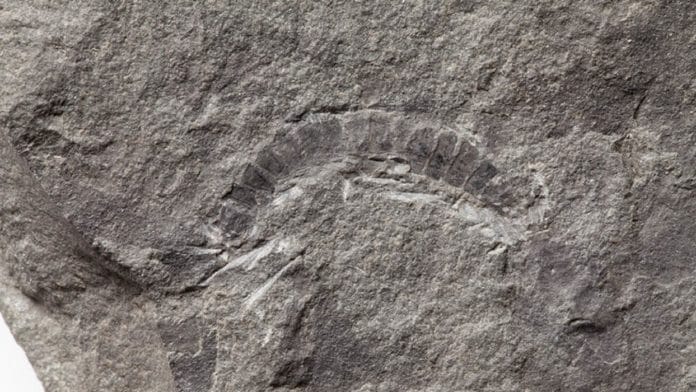Scientists at The University of Texas at Austin have used fossil dating techniques and discovered the world’s oldest bug. They found that 425-million-year-old millipede fossil from the Scottish island of Kerrera is older than any known fossil of an insect, arachnid, or other related creepy-crawlies.
Scientists discovered that the ancient millipede fossil- Kampecaris obanensis– is 425 million years of age. Or it might be 75 million years younger than the age other estimated oldest millipede to be. They used a method known as molecular clock dating, which depends on DNA’s mutation rate. Other research using fossil dating found that the oldest fossil of a land-dwelling stemmed plant is 425 million years of age and 75 million years more youthful than molecular clock estimates.
Michael Brookfield, a research associate at UT Austin’s Jackson School of Geosciences, said, “Although it’s certainly possible there are older fossils of both bugs and plants, that the fact they haven’t been found — even in deposits known for preserving delicate fossils from this era — could indicate that the ancient millipede and plant fossils that have already been discovered are the oldest specimens.”
Through this discovery, scientists offered new evidence on the origin and evolution of bugs and plants while suggesting that how these species evolved much more rapidly than previously thought, going from lake-hugging communities to complex forest ecosystems in just 40 million years.
Elizabeth Catlos, a professor in the Jackson School’s Department of Geological Sciences, said, “Who is right, them or us? We’re setting up testable hypotheses – and this is where we are at in the research right now.”
Brookfield said, “Given their potential evolutionary significance, I was surprised that this study was the first to address the age of the ancient millipedes.”
Stephanie Suarez, a doctoral student at the University of Houston said, “a reason could be the difficulty of extracting zircons — a microscopic mineral needed to precisely date the fossils — from the ashy rock sediment in which the fossil was preserved. As an undergraduate researcher at the Jackson School, Suarez developed a technique for separating the zircon grain from this type of sediment.”
“It’s a process that takes practice to master. The zircons are easily flushed away when trying to loosen their grip on the sediment. And once they are successfully released from the surrounding rock, retrieving the zircons involves an eagle-eyed hunt with a pin glued to the tip of a pencil.”
“That kind of work trained me for the work that I do here in Houston.”
Journal Reference:
- Michael Brookfield et al., Myriapod divergence times differ between molecular clock and fossil evidence: U/Pb zircon ages of the earliest fossil millipede-bearing sediments and their significance. DOI: 10.1080/08912963.2020.1761351
